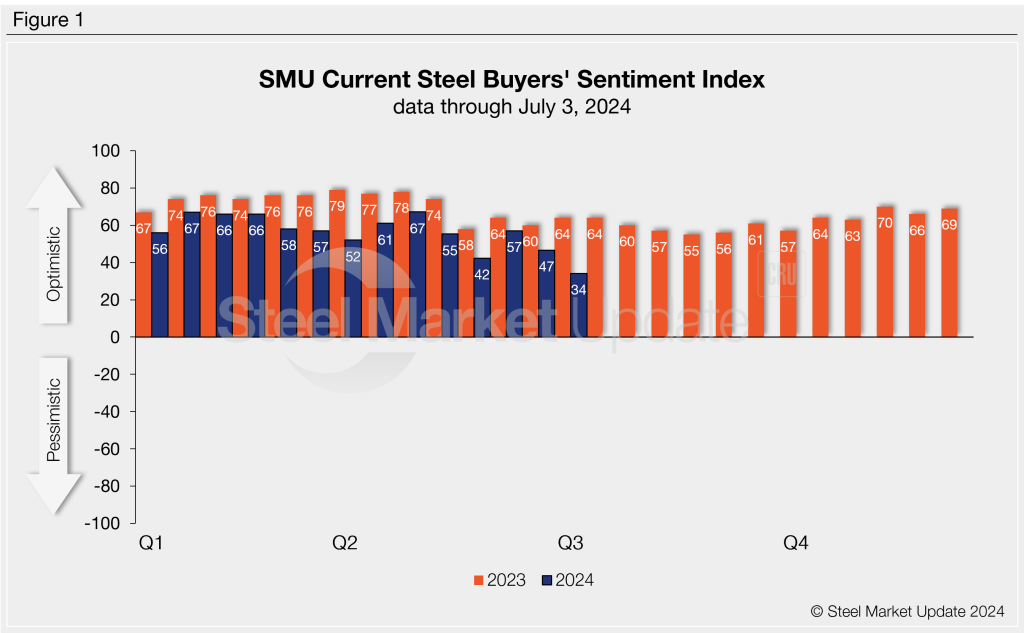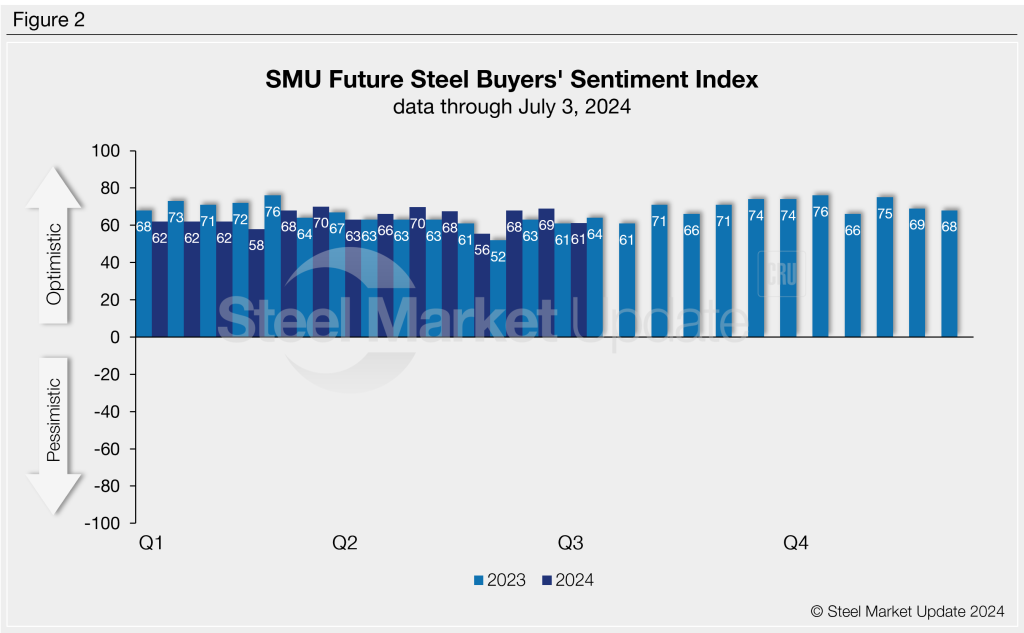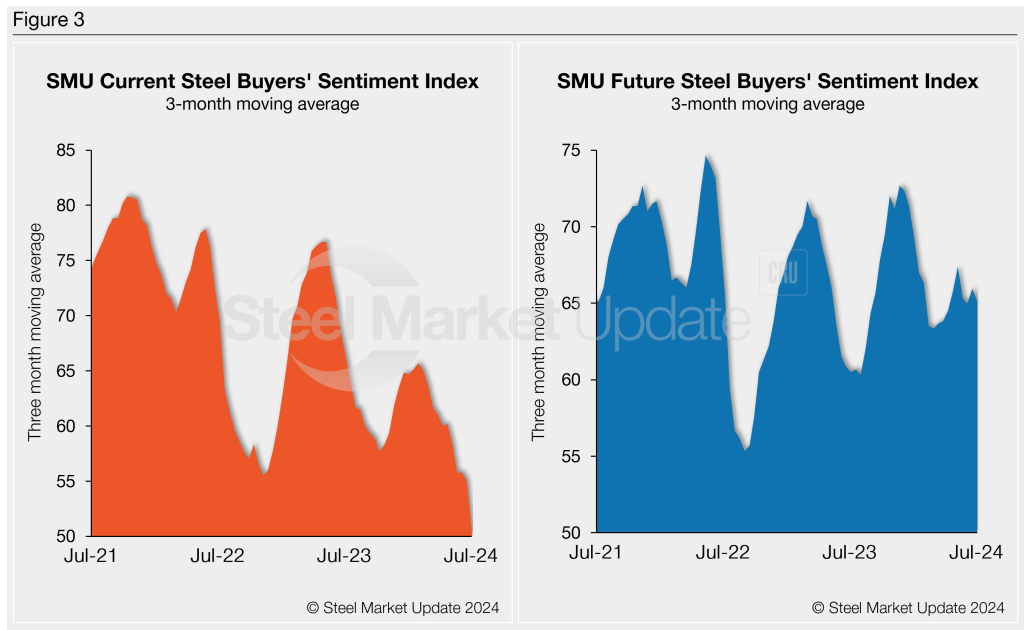SMU Data and Models

SMU survey: Buyers' Sentiment Indices drop, Current touches 4-year low
Written by Ethan Bernard
July 5, 2024
SMU’s Steel Buyers’ Sentiment Indices dropped this week, with Current Sentiment plummeting to a level not seen since the Covid-19 pandemic, according to our most recent survey data.
Every other week, we poll steel buyers about their companies’ chances of success in the current market as well as three to six months down the road. We use this information to calculate our Current Steel Buyers’ Sentiment Index and Future Sentiment Index. (We have historical data dating to 2008. You can find that here.)
SMU’s Current Buyers’ Sentiment Index was +34 this week, tumbling 13 points from two weeks earlier (Figure 1). This is the lowest reading since August 2020 when it also stood at +34. Since April this index has fluctuated wildly, going as high as +67 at the end of that month.

SMU’s Future Buyers’ Sentiment Index measures buyers’ feelings about business conditions three to six months in the future. This index stands at +61 this week, off eight points from our prior market check. (Figure 2). While not having the same swings as Current Sentiment, it has still varied up to 14 points since April. It touched +70 at the end of that month and +56 at the end of May.

Measured as a three-month moving average, the Current Sentiment 3MMA dropped to +50.42 from +54.89 two weeks earlier.
Meanwhile, this week’s Future Sentiment 3MMA fell to +65.15 from +65.94 at the previous market check (Figure 3).

What SMU survey respondents had to say:
“Continued deflationary mill pricing creates panic.”
“With so much volatility in price, it’s hard to pick an entry point that will be in our favor by the time the material comes ready.”
“We have a modest backlog, so will survive.”
“Our peers have lost confidence and it shows in their pricing.”
“I think our industry will start to bounce back.”
“I don’t see any reason for much better until interest rates are cut and construction demand increases.”
“Demand will determine our success. We will have plenty of low-cost steel.”
About the SMU Steel Buyers’ Sentiment Index
The SMU Steel Buyers Sentiment Index measures the attitude of buyers and sellers of flat-rolled steel products in North America. It is a proprietary product developed by Steel Market Update for the North American steel industry. Tracking steel buyers’ sentiment is helpful in predicting their future behavior. A link to our methodology is here. If you would like to participate in our survey, please contact us at info@steelmarketupdate.com.

Ethan Bernard
Read more from Ethan BernardLatest in SMU Data and Models

SMU Survey: Sheet lead times ease further, plate hits one-year high
Steel buyers responding to this week’s SMU market survey report a continued softening in sheet lead times. Meanwhile, plate lead times have moderately extended and are at a one-year high.

SMU Survey: Buyers report more price flexibility from mills
Nearly half of the steel buyers responding to this week’s SMU market survey say domestic mills are showing increased willingness to negotiate pricing on new spot orders. This marks a significant shift from the firmer stance mills held in prior weeks.

SMU Survey: Buyers’ Sentiment Indices fall
Current Sentiment Index dropped six points to +42 this week compared to two weeks earlier. It has fallen in every successive survey since reaching a 2025 high of +66 on Feb. 19.

March service center shipments and inventories report
Steel service center shipments and inventories report through March 2024.

Apparent steel supply contracts in February
The amount of finished steel that entered the US market in February receded from January’s peak, according to our analysis of Department of Commerce and American Iron and Steel Institute (AISI) data.
